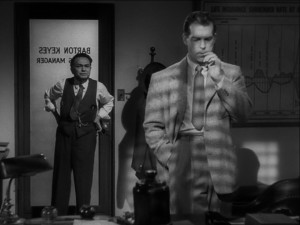 Film has inspired everyone from fashion designers, video games and even music videos. Website design is no different, with film lending its techniques to establish a particular look or mood.
Following on the heels of Bauhaus, we’re going to explain film noir, its history, its key players, and how you can bring it to your designs.
Let’s get started.
Film has inspired everyone from fashion designers, video games and even music videos. Website design is no different, with film lending its techniques to establish a particular look or mood.
Following on the heels of Bauhaus, we’re going to explain film noir, its history, its key players, and how you can bring it to your designs.
Let’s get started.
So, what is Film Noir?
The term literally means “black film” in French, but in the cinematic world it has come to encompass certain aesthetics and tropes. These including the use of black and white film, vignettes, high and low key lighting, along with the presence of cynical characters. The genre is usually associated with crime dramas, or those fitting in the timeline of WWI and WWII, but film noir has often branched out from these “stereotypes”. Films like “It’s a Wonderful Life” and “Vertigo” defy many of the classic noir films memes, but still managed to fit in the category. In ‘It’s a Wonderful Life’, the protagonist is suicidal and the mood of the film is dark, while Vertigo, though not a black and white film, features class film noir themes — a tortured anti-heroe, a post-war timeline and, of course, a complex plot.The Beginnings
German Expressionism
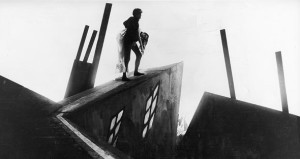
The Rise of Film Noir
While the German Expressionism movement is credited as having a strong influence over the birth of film noir, it was the crime fiction publication Série Noire, founded by Marcel Duhamel in 1945, that inspired the French critic Nino Frank to coin the term. The Série Noire collections depicted the work of private detectives, the central character in a lot of films categorized as film noir.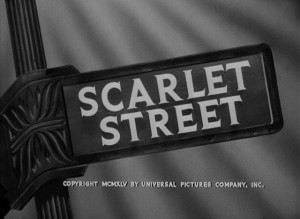
Key Players of Film Noir
Fritz Lang
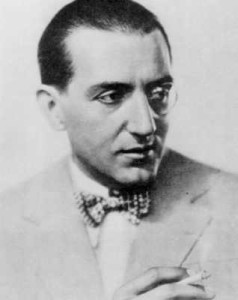 Born Friedrich Christian Anton “Fritz” Lang of German and Austrian descent, Lang is one of the most notable filmmakers of the school of German Expressionism.
With iconic films like Metropolis (1927) and M (1931), Lang brought a new, dark approach to cinema which helped give birth to film noir.
Lang’s body of work served as the template for future filmmakers of the noir genre. His films dealt with central noir themes — paranoia, madness, broken dreams, inner conflict and morality.
The cynical and brutal side of the genre reared its head more often in some of Lang’s later works like The Big Heat (1953), While the City Sleeps (1956) and Beyond a Reasonable Doubt (1956).
These films all featured the a pessimism typical of the genre, that was even more exaggerated by Lang’s own pessimistic view of the world.
His style became simplified but still held fast to the characteristics in film noir.
Born Friedrich Christian Anton “Fritz” Lang of German and Austrian descent, Lang is one of the most notable filmmakers of the school of German Expressionism.
With iconic films like Metropolis (1927) and M (1931), Lang brought a new, dark approach to cinema which helped give birth to film noir.
Lang’s body of work served as the template for future filmmakers of the noir genre. His films dealt with central noir themes — paranoia, madness, broken dreams, inner conflict and morality.
The cynical and brutal side of the genre reared its head more often in some of Lang’s later works like The Big Heat (1953), While the City Sleeps (1956) and Beyond a Reasonable Doubt (1956).
These films all featured the a pessimism typical of the genre, that was even more exaggerated by Lang’s own pessimistic view of the world.
His style became simplified but still held fast to the characteristics in film noir.
Alfred Hitchcock
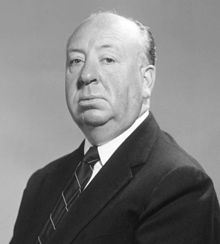 Sir Alfred Joseph Hitchcock, KBE (13 August 1899 – 29 April 1980), an Englishman famous for his films and production, was just one of the many directors influenced by German Expressionism. He later went on to produce some of the classic film noir thrillers.
In films like The Lodger (1927), he implemented techniques seen in expressionist films like obscured camera angles and different lighting, despite objection from his studio.
This German influence can be seen in the majority of his films, even those not considered film noir, including Psycho where he blurred the image of Norman Bates through the shower curtain to mimic a technique used in Nosferatu (1922).
Hitchcock experienced incredible success with his work, especially those of the noir genre including Notorious (1946), Strangers on a Train (1951), Rear Window (1954), and Psycho (1960).
Hitchcock transformed the genre into his own style, making his work distinguishable amongst his contemporaries as he went on to influence others with his body of work.
Sir Alfred Joseph Hitchcock, KBE (13 August 1899 – 29 April 1980), an Englishman famous for his films and production, was just one of the many directors influenced by German Expressionism. He later went on to produce some of the classic film noir thrillers.
In films like The Lodger (1927), he implemented techniques seen in expressionist films like obscured camera angles and different lighting, despite objection from his studio.
This German influence can be seen in the majority of his films, even those not considered film noir, including Psycho where he blurred the image of Norman Bates through the shower curtain to mimic a technique used in Nosferatu (1922).
Hitchcock experienced incredible success with his work, especially those of the noir genre including Notorious (1946), Strangers on a Train (1951), Rear Window (1954), and Psycho (1960).
Hitchcock transformed the genre into his own style, making his work distinguishable amongst his contemporaries as he went on to influence others with his body of work.
Orson Welles
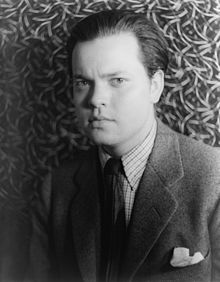
George Orson Welles (May 6, 1915 – October 10, 1985) probably most famous for works like Citizen Kane (1941), The Lady of Shanghai (1947) and Touch of Evil (1958). Welles was an American actor, director, writer and producer. His work has been known to feature many qualities of film noir propelling them into some of the more famous works in the genre.
These three films covered all the classic film noir tropes. In ‘Citizen Kane’ the use of high and low key lighting help set the tone, with dark pools of shadow in contrast to light. Subjective and low angle shots were also utilized. ‘The Lady of Shanghai’ kept to Welles’ use of the film noir technique by introducing mystery and a complex plot featuring a femme fatale, Rita Hayworth, in a tale of deceit and murder. ‘Touch of Evil’ embodied the film noir genre as a whole. While Orson Welles’ work was considered commercial failures, he is still credited as the “ultimate auteur” with his distinctive techniques and innovative use of camera angles, chiaroscuro lighting and nonlinear storytelling.Nailing the Film Noir Look
Rule #1: Lighting is Everything
Lighting — and by extension, your tonal range — is the biggest factor in the film noir look.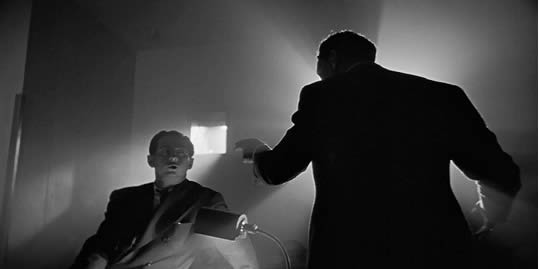
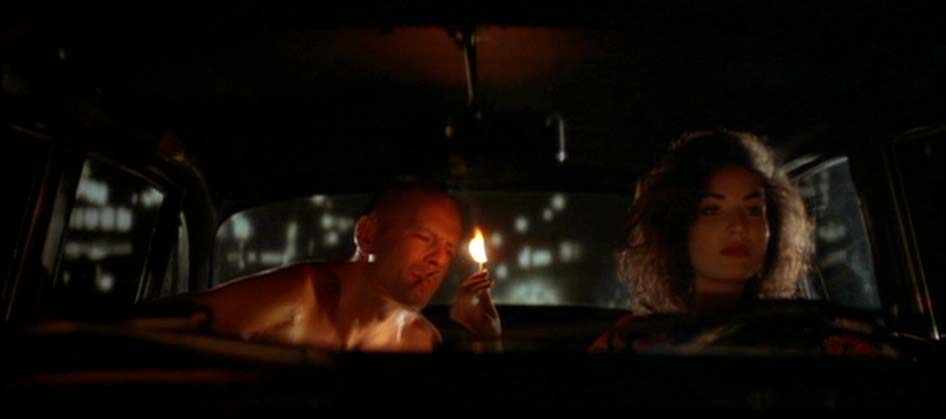
Rule #2: Type – Make it Blocky and Luminous
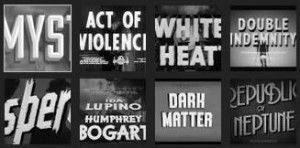
Liberator
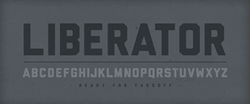 Ryan Clark’s describes Liberator as a war era font, inspired by text markings on bombers.
It’s a masculine, newspapery block font that looms beautifully out of shadows of a noir-inspired design.
Ryan Clark’s describes Liberator as a war era font, inspired by text markings on bombers.
It’s a masculine, newspapery block font that looms beautifully out of shadows of a noir-inspired design.
Francois One
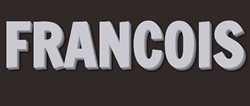 Francois One is another substantial block font, but with an edgy feel. The slightly angles stroke finishes make it look amiable but slightly anxious.
Francois One is available as a free download via Font Squirrel or as an embedded web font though Google Fonts.
Francois One is another substantial block font, but with an edgy feel. The slightly angles stroke finishes make it look amiable but slightly anxious.
Francois One is available as a free download via Font Squirrel or as an embedded web font though Google Fonts.
Bree Serif
 While sans-serif fonts are the norm, serif and even brushscript styled fonts can have been used to great effect in the past.
Bree Serif is block serif that lends itself well to 50’s faux 3d effect. It too is available though good web font library.
While sans-serif fonts are the norm, serif and even brushscript styled fonts can have been used to great effect in the past.
Bree Serif is block serif that lends itself well to 50’s faux 3d effect. It too is available though good web font library.
Rule #3: There Are No Heroes in Noir — Only Shades of Gray
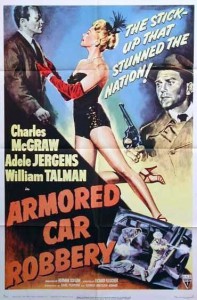 The film noir genre threw a wrench into people ideas of what a ‘heroes’ was. In the world of noir, no-one is pure and good, and even the villains have their reasons.
Even the female characters broke away from the typical. For the first time, ‘femme fatales’ appeared on the screen, channeling mystery and behaving in manipulative and deceitful ways — all with an air of control and solidarity.
It wasn’t just the characters that were atypical but the story-lines as well. Plots were more complex, the mood more dark and brutal, and with endings that strayed from the fairy tale endings.
So, what does this mean to a design?
The film noir genre threw a wrench into people ideas of what a ‘heroes’ was. In the world of noir, no-one is pure and good, and even the villains have their reasons.
Even the female characters broke away from the typical. For the first time, ‘femme fatales’ appeared on the screen, channeling mystery and behaving in manipulative and deceitful ways — all with an air of control and solidarity.
It wasn’t just the characters that were atypical but the story-lines as well. Plots were more complex, the mood more dark and brutal, and with endings that strayed from the fairy tale endings.
So, what does this mean to a design?
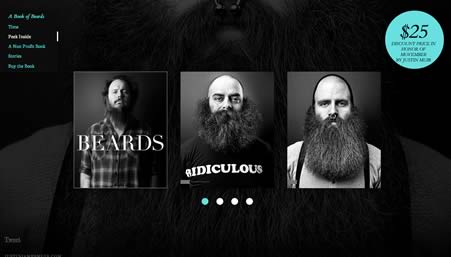
with a noir-esque flavour
Rule #4: Stylize it – Use Shape, Shadows and Silhouettes
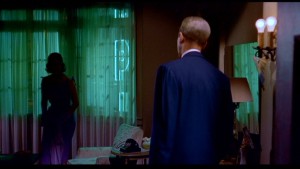
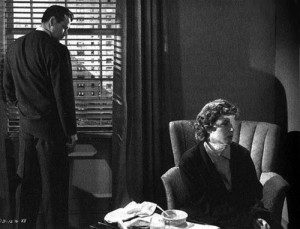
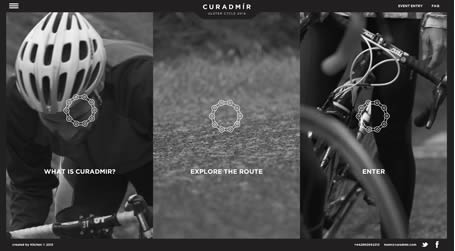
Where do you see Film Noir Today?
Noir City
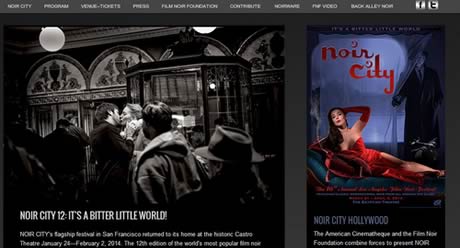 It is no surprise that the designer of the website for the Noir City Film Festival created the site in line with the genre’s conventions.
Featuring a predominantly dark color palette, aside from the colored posters, the website channels what film noir is all about. The site’s placement of posters and white text keeps the site readable, while keeping its moody edge.
It is no surprise that the designer of the website for the Noir City Film Festival created the site in line with the genre’s conventions.
Featuring a predominantly dark color palette, aside from the colored posters, the website channels what film noir is all about. The site’s placement of posters and white text keeps the site readable, while keeping its moody edge.
Belief Skateboards
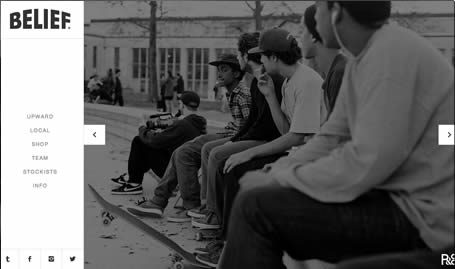 Belief Skateboards mixes some classic noir elements in with some cool modern twists.
The inner-urban scenes, gritty black & white imagery and hard-bitten faces are copybook film noir.
While the daylight photography and light backgrounds break the mold, they still manage to get an austere, almost bleak look to the site.
Belief Skateboards mixes some classic noir elements in with some cool modern twists.
The inner-urban scenes, gritty black & white imagery and hard-bitten faces are copybook film noir.
While the daylight photography and light backgrounds break the mold, they still manage to get an austere, almost bleak look to the site.
S4C Logo
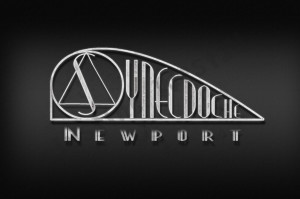 Even logos can get the film noir treatment, as Juzzy Bunni shows in her design, channeling the styles of film noir into something that looks like it was lifted right out of a classic film.
The use of texture and gradient for the background gives you that really gritty feeling. The hard lines featured in the typography really call attention to the logo itself as well as the added treatment done inside each individual letter.
Even logos can get the film noir treatment, as Juzzy Bunni shows in her design, channeling the styles of film noir into something that looks like it was lifted right out of a classic film.
The use of texture and gradient for the background gives you that really gritty feeling. The hard lines featured in the typography really call attention to the logo itself as well as the added treatment done inside each individual letter.
Noir Icons
That’s all for today. I hope this gives you some ideas for how to add some gritty drama to the next project that fits.
Frequently Asked Questions about Film Noir Style
What are the key elements of film noir style?
Film noir style is characterized by a number of key elements. These include low-key lighting, which creates stark contrasts between light and dark areas, and often gives scenes a gloomy, shadowy appearance. The use of unusual camera angles and compositions is another hallmark of the style, often used to create a sense of disorientation or unease. The narratives of film noir are typically complex and convoluted, often involving crime, corruption, and moral ambiguity. The characters are often flawed and morally compromised, with the protagonists frequently being anti-heroes.
How did film noir style evolve?
Film noir style evolved from a variety of influences, including German Expressionism, hard-boiled detective novels, and the socio-political context of the time. The style emerged in the 1940s and 1950s, a time of great uncertainty and change in the world, which is reflected in the themes and aesthetics of film noir. Over time, the style has been adapted and reinterpreted by various filmmakers, leading to the emergence of neo-noir and other sub-genres.
What is the significance of the femme fatale in film noir?
The femme fatale is a key figure in film noir, often serving as a catalyst for the narrative. These characters are typically beautiful, seductive, and dangerous, using their allure to manipulate men and often leading them into dangerous situations. The femme fatale represents a challenge to traditional gender roles and societal norms, embodying a form of female power and independence that was often seen as threatening in the context of the time.
How does film noir style influence modern cinema?
Film noir style has had a significant influence on modern cinema, with many contemporary filmmakers drawing on its aesthetics and themes. The style’s emphasis on visual storytelling, complex narratives, and morally ambiguous characters can be seen in a wide range of modern films, from crime thrillers to psychological dramas. The influence of film noir can also be seen in the rise of neo-noir and other sub-genres, which reinterpret the style for a modern audience.
What are some iconic examples of film noir?
Some of the most iconic examples of film noir include “The Maltese Falcon” (1941), “Double Indemnity” (1944), and “The Big Sleep” (1946). These films are renowned for their distinctive visual style, complex narratives, and memorable characters, and have had a lasting impact on the genre. Other notable examples include “Touch of Evil” (1958), “Chinatown” (1974), and “Blade Runner” (1982), which demonstrate the evolution and enduring influence of the style.
How is film noir style used in other forms of media?
Film noir style has also been used in other forms of media, including television, literature, and graphic novels. The style’s distinctive aesthetics and themes lend themselves well to these mediums, creating a unique and immersive storytelling experience. Examples include the television series “Twin Peaks”, the graphic novel “Sin City”, and the video game “L.A. Noire”.
What is the role of the city in film noir?
The city plays a crucial role in film noir, often serving as a character in its own right. The urban setting is typically depicted as a labyrinth of danger and corruption, reflecting the moral ambiguity and existential dread that are central to the genre. The cityscape also provides a backdrop for the style’s distinctive visual aesthetics, with its dark alleyways, neon lights, and imposing architecture.
How does film noir style reflect the socio-political context of its time?
Film noir style is often seen as a reflection of the socio-political context of its time. The style emerged in the aftermath of World War II, a time of great uncertainty and disillusionment, which is reflected in its dark themes and pessimistic outlook. The genre often deals with issues of corruption, crime, and moral ambiguity, reflecting societal anxieties and fears.
What is the difference between film noir and neo-noir?
While both film noir and neo-noir draw on similar themes and aesthetics, there are some key differences between the two. Film noir refers to a specific period of film history, from the 1940s to the 1950s, while neo-noir is a more contemporary genre that draws on the style and themes of film noir but updates them for a modern audience. Neo-noir films often incorporate elements of other genres, and may use color and modern filmmaking techniques in ways that classic film noir did not.
How can I incorporate film noir style into my own filmmaking?
Incorporating film noir style into your own filmmaking involves more than just replicating its visual aesthetics. It also involves understanding the themes and narrative structures that define the genre. This might involve creating complex, morally ambiguous characters, crafting a narrative that involves crime or corruption, and using lighting and composition to create a sense of unease and disorientation. It’s also important to consider how you can reinterpret these elements in a way that is relevant and engaging for a modern audience.
 Gabrielle Gosha
Gabrielle GoshaGabrielle is a creative type who specializes in graphic design, animation and photography.

